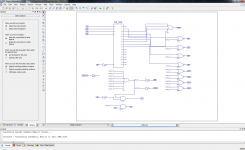Elfen
Well-known member
Yeah, dealing with China can be expensive in shipping costs and shipping time (up to 6 weeks or more to go through customs? Sheesh!) But they are cheap otherwise.
TechKnight, copyright your design (send 2-self addressed mailed planes to yourself and open one up to see it and keep the other sealed until a "judge needs to see it," and keep both together) and then get an application to send a copy to the Copyright Office at the Library of Congress. Last time I had something copyrighted by the LoC was in the 1990s and cost $14, I don't know what it is now. I understand that you are doing this for the community and all, but its best to protect your ideas. It's nice to have that "by © year" with your name on it on what you put out.
TechKnight, copyright your design (send 2-self addressed mailed planes to yourself and open one up to see it and keep the other sealed until a "judge needs to see it," and keep both together) and then get an application to send a copy to the Copyright Office at the Library of Congress. Last time I had something copyrighted by the LoC was in the 1990s and cost $14, I don't know what it is now. I understand that you are doing this for the community and all, but its best to protect your ideas. It's nice to have that "by © year" with your name on it on what you put out.
Last edited by a moderator:




